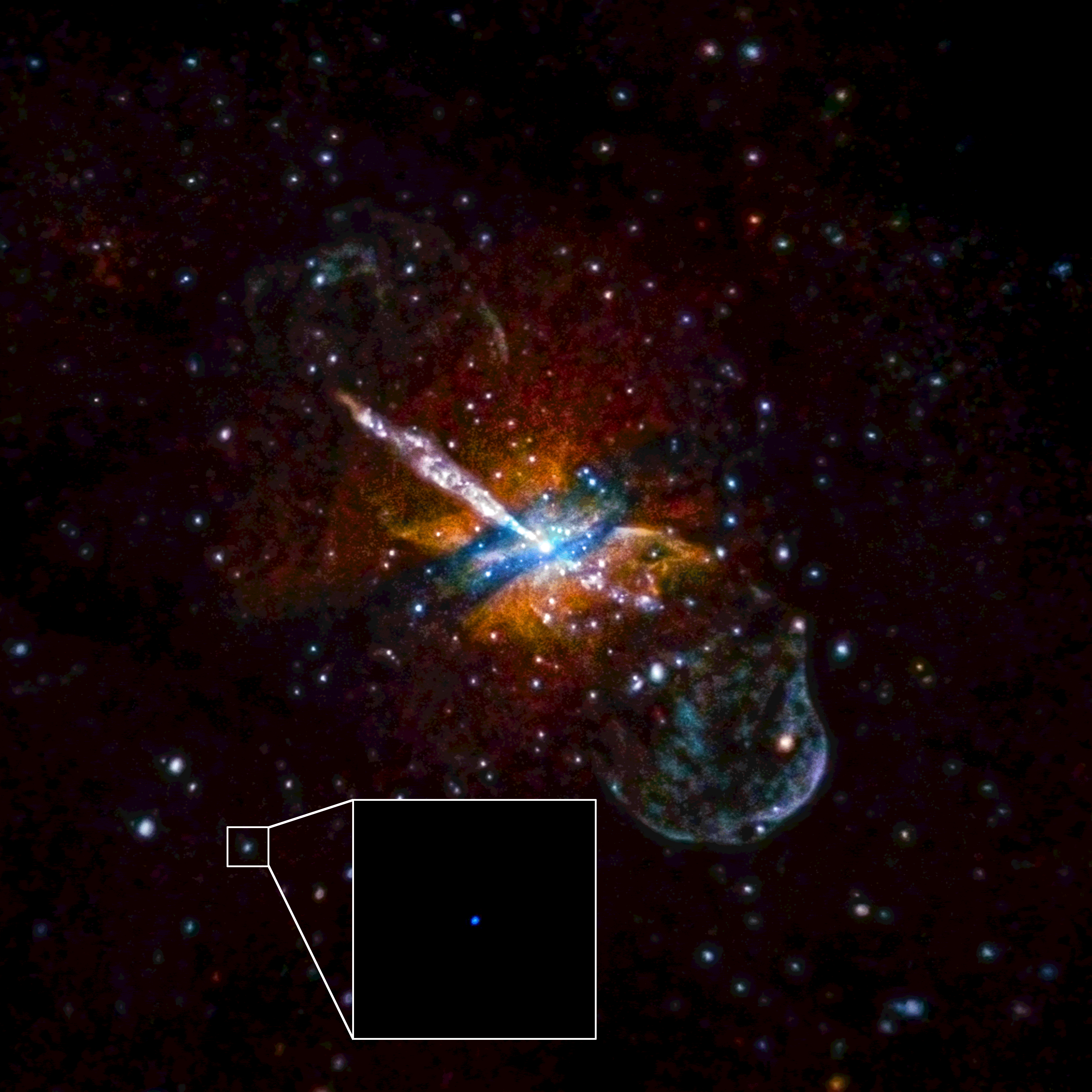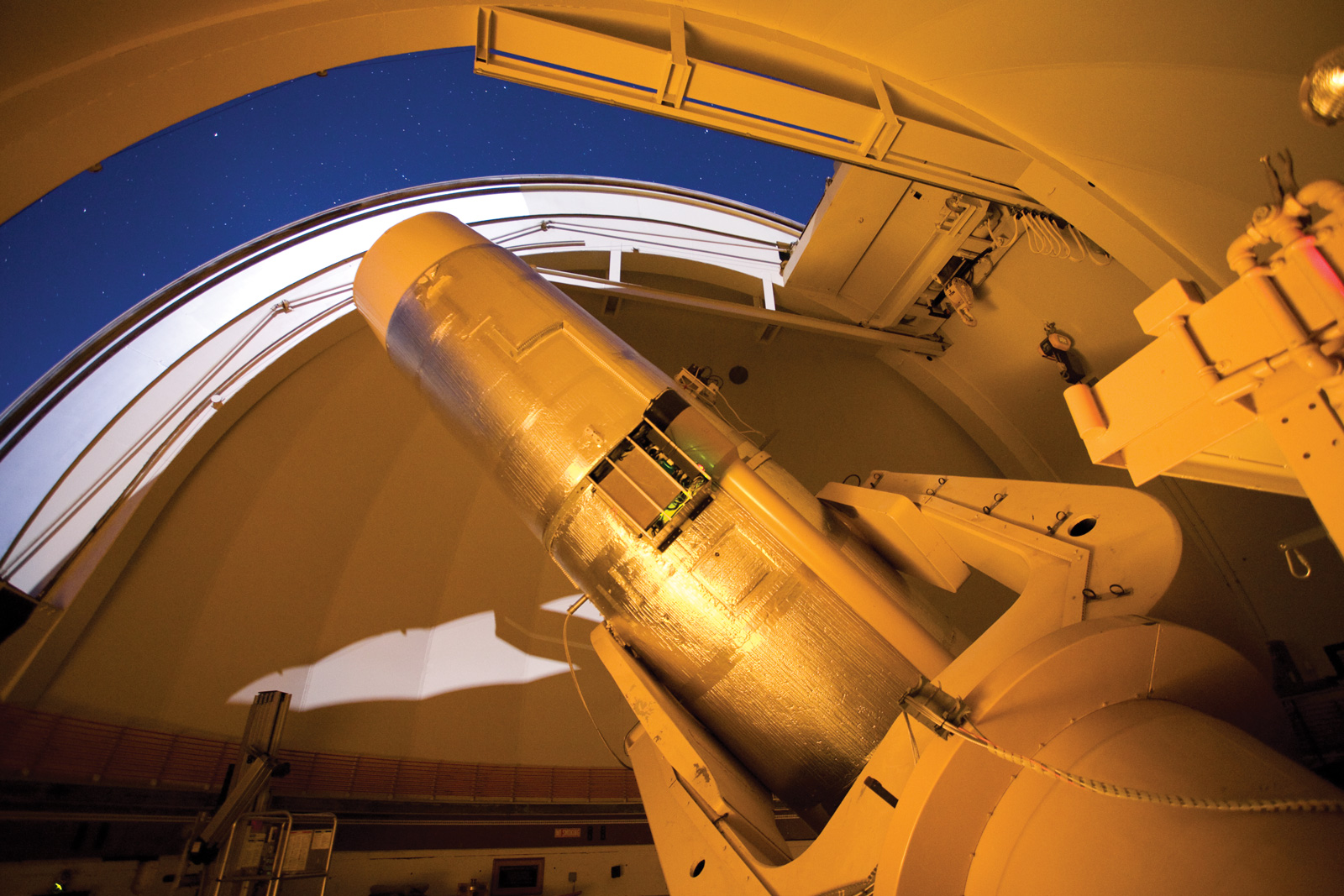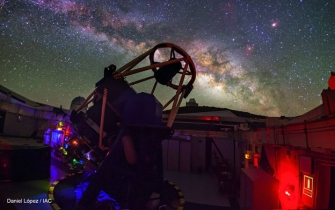Time Domain Astronomy
The few paragraphs below outline what time-domain astronomy is, what kind of cosmic phenomena is explored by the discipline, and how GROWTH aspires to make significant contributions to the field.
What is time-domain astronomy

Time-domain astronomy is a branch of the astronomy and astrophysics discipline that focuses on studying the lifetime evolution and changes of a wide variety of cosmic objects, especially when such changes happen on short cosmic time-scales (hours or days to a year). Common objects of interest are novae, supernovae, gamma-ray bursts, active galactic nuclei, binary stars, pulsars, and many more. These are aptly referred to as transients because when an event such as an explosion takes place, the electromagnetic signature radiated as a result is transient in nature. It appears as a flash in the sky for a period and then slowly fades away. By capturing these electromagnetic signatures, astronomers learn about the cosmic objects themselves and the physical processes that govern their evolution.
How astronomers explore the dymanic cosmos

Merging neutron stars, exploding stars, stars that shed their top layers and all other transient events have a peculiar and often well know electromagnetic emissions at particular frequency. Astronomers use telescopes each sensitive to different parts of the electromagnetic spectrum – from infrared to X- and gamma-ray – to survey the night sky in search of transients. They scan an area, move to another one then return back to the previous one and scan again. When they subtract the second image from the first image of the same area they can see if anything new has appeared. Telescopes that keep doing are often small in size. They cannot see very faint objects but they can cover wide section of the sky in one scan. Data from these telescopes that carries information about changes in the night sky is stored in a database to produce is a survey of the transient sky.
How GROWTH can advance time-domain astronomy

Astronomers regularly check these surveys for interesting objects and when they find one they point their bigger telescope to study them in detail. The GROWTH network of observatories is a collection of such telescopes around the world position in a way that allows us to observe a transient event uninterrupted by daylight. That is possible because even when a telescope at one location is blinded by daylight, we have another telescope somewhere in the world still covered in darkness.
This is important not only because we can continuously monitor a transient. When a transient flashes in the sky is an entirely random event. If we have just one telescope set up to study it, we may easily miss the initial hours after detection if the detection happens during the day at the location of our telescope. With a global network, we can start observing as soon as a transient is discovered. Many interesting events such as baby supernovae and neutron star mergers fade away within the first 24 hours of explosion and catching their fast-changing signals before they are gone will allow astronomers to find out critical clues about their origins and evolution mechanisms.
Image credit in order of appearance: (1) Galaxy NGC 5128 with the ultraluminous X-ray flare. NASA/CXC/UA/J.Irwin et al; (2) Samuel Oschin Telescope at Palomar Observatory. Caltech; (3) GROWTH Network of Telescopes. Caltech/IPAC




